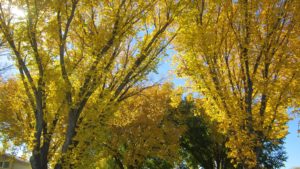
Clients ask this question often when deciding on their garden design: What is the difference between annuals and perennials? It is important to know when deciding on what plants to put in your garden. Read on to find out why.

What Are Annual Plants?
Annual plants only last one growing season. They’ll grow, bloom, and then die in the winter season. If you want a new garden layout each year, then you would want a garden full of annuals. Each spring is a clean slate for a new garden design. Also, annuals bloom for longer than perennials and usually have bigger blooms. They are a beautiful addition to your garden.

What Are Perennial Plants?
If you want a more permanent garden with trees and plants that don’t have to be replaced yearly, then perennials are the way to go. Some perennials only last a few years, but others can last many years. Although, the garden will still need weeding done each year, but you won’t have to worry about removing and replanting new plants.
The easiest way to remember the difference between perennials and annuals is to remember this phrase: Perennials are permanent while annuals are replaced annually.
Although the phrase isn’t exactly true, perennials won’t live forever, so they’re not permanent. They do live much longer than a year, so they are more permanent than annuals.
 Perennials Acting Like Annuals!
Perennials Acting Like Annuals!
Something we remind our clients is although a plant is considered a perennial, sometimes they die each year if you leave it outside. Our winter climate here, in northern Alberta, is too cold for some perennials. If you want to keep it alive you’d have to bring it inside or house it in a greenhouse that doesn’t get too cold in the winter months. When choosing plants for your perennial garden make sure you check if the plant can withstand our cold winter temperatures.
 Do Your Research!
Do Your Research!
Want to know what plants are annuals or perennials? OR do you want to know what would work in a Northern Alberta climate? The internet is at your finger tips, but we thought we’d save you the trouble!
- Here is a directory of perennials that includes short descriptions about them!
https://extension.illinois.edu/perennials/directory.cfm
- Here is a directory of annuals that includes short descriptions about them!
http://extension.illinois.edu/annuals/directory.cfm?ref=organicgglunkwn&prid=pfseogglunkwn
- Since we, Nexstep Landscaping, serves Edmonton and surrounding areas, it’s important we include this wonderful link to a blog that helps with “the challenge of growing a variety of perennials in a northern Canadian climate.” It includes what perennials will grow in northern Alberta as well as some gardening tips.
http://zoneonegarden.blogspot.ca/2007/05/plant-list-hardy-perennials-for-north.html
Your other option is to email us at info@nexsteplandscaping .com.
We can answer your questions! Since we’ve had to install a lot of flower beds we can tell you what is most popular and good for the Edmonton area!










Recent Comments